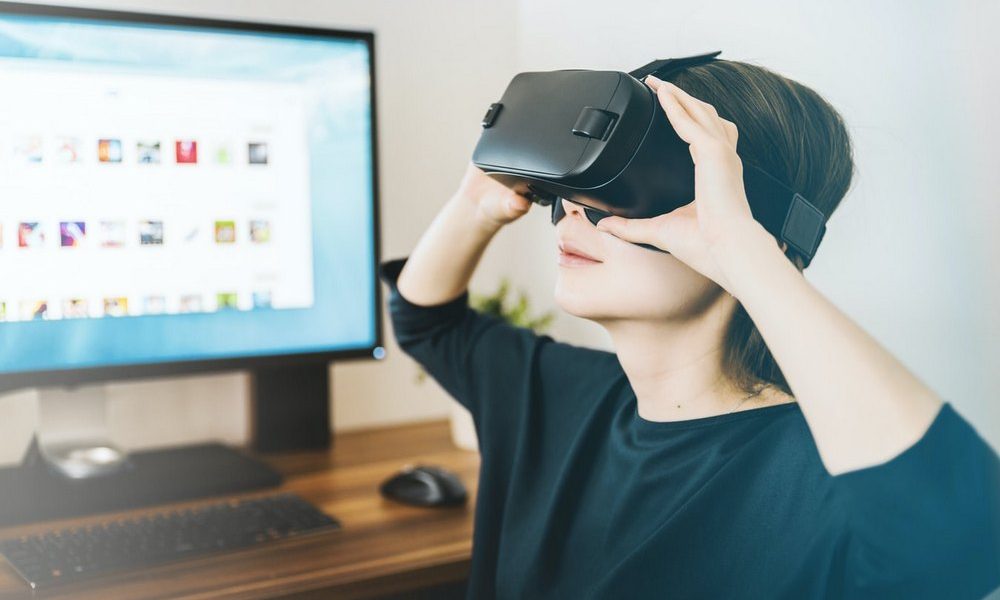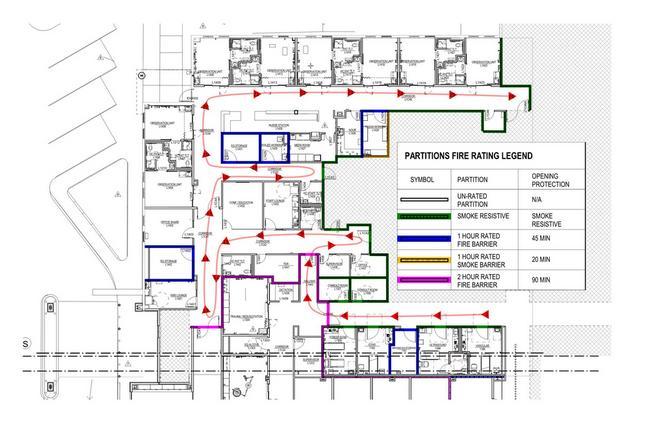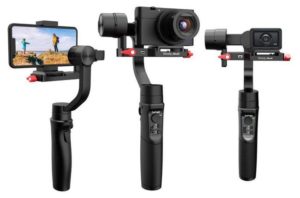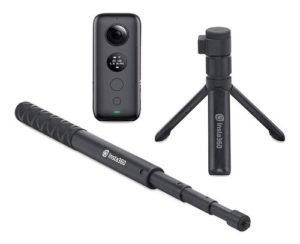
Subscribe Now
Top Tips for Acing Virtual Hospital Construction Site Visits, Building Inspections
By Rutwik Sathe
It goes without saying the COVID pandemic has hit the AEC industry hard. It impacted every aspect of construction. The supply chain of construction material was severely affected by lockdowns and restrictions. The number of construction workers, who were already in short supply in many states, was dramatically affected. Workers on the construction site were required to be screened for COVID-19-like symptoms and, if tested positive, had to go into quarantine, affecting construction schedules.
Also, the design team was unable to visit the construction site frequently to review construction progress and advise on solutions.
If a project was able to overcome these challenges and finish construction, there remained the important step of passing city and state inspections. Many city and state officials in charge of inspections were under lockdown orders and were not performing in-person inspections.
The AEC industry is navigating these challenges successfully because of ingenious problem-solving by owners, contractors, architects and engineers together, and all entities are united to achieve the goal of delivering projects efficiently for the good of the community. One such important solution that came out of this pandemic is virtual site observation visits and virtual city/state inspections. And, now that these solutions are viable, they will exist long after the pandemic, as there are many advantages to virtual inspections.
In May 2020, when many states were under strict stay-at-home orders, our EYP Dallas team of medical planners, architects and interior designers was working remotely to finish two hospital renovation projects. Before the owner can occupy the renovated building, local and state agencies must visit the newly completed project for a final inspection and provide a passing report. Despite the travel restrictions, the design team also needed to finish preparing punchlists.
The hospital was anxious to occupy the new facility in preparation for COVID-19 related surges. Inspectors from the state agency, however, were not visiting construction sites in person for safety reasons.
Thankfully, the state inspectors agreed to carry out the project inspection virtually and provide a final inspection report via email. We conducted two virtual inspections to the satisfaction of the state agency, allowing the hospital to occupy these projects without delay. The A/E design team was also able to conduct regular virtual site observation visits to track construction progress and answer questions that came up.
Each virtual inspection taught us important lessons about making the experience immersive and communicating the construction progress clearly. The tips listed below also apply to site observations conducted routinely.
Here are some of the lessons, divided into three categories:
- Pre-planning, 2. inspection simulation & 3. inspection day tips
1. Pre-planning
Like any presentation, a virtual inspection requires pre-planning to ensure information is successfully communicated to the intended audience. The audience can include architects, city/state officials and/or owners. In a regular in-person visit, they walk the construction site with a floorplan (typically a Life Safety drawing) and pause to study critical areas. They may request a ladder to look above the ceilings or they may ask to review fire caulking around penetrations below counters. They do this to verify the renovated building meets current building codes and is fit to be occupied. The A/E design team will want to observe and note any deviations from the design documents.
It is critical for owners, architects and contractors to plan ahead to ensure any questions or concerns of the observers can be addressed virtually. The required preparation can be broken down into three categories: drawings, equipment and site preparation.
Drawings:
- Keep pdfs of drawings available to share on screen as needed.
- Generate and share a simplified Life Safety drawing by highlighting priority walls, smoke compartments and suites.
- Draw an inspection movement route keeping numbered flags near each room. The numbered flags help the virtual observers to direct the onsite team to a particular location.
- Virtual meeting software allowing audio-video sharing, split-screen presentation and recording (for example, Zoom)
- PDF markup software to share drawings and update the camera location on the drawing in real time (see example image)
- Smartphone camera that allows sharp image quality
- Movement stabilization gimbal for smartphone, which is vital for a smooth viewing experience, as it avoids jerky movements and viewing discomfort
- 3D cameras and VR headsets give a more immersive experience to the viewer
- Powerful handheld flashlight to light up dark, above-ceiling spaces for the camera
- Tape measure/laser measure for field dimensions
- Laser pointer to identify areas of concern
Site Preparation:
- Ensure there is high-speed internet (Wi-Fi or internet hotspot)
- Scope out all junctions where the inspector might ask for a detailed review and remove selected acoustic ceiling tiles, as well as opening access panels
- Stage ladders at convenient locations throughout the project providing quick access to review above-ceiling conditions when requested.
2. Inspection simulation
Plan for a mock inspection with the owner, contractor and architect a few days before the actual inspection to maximize the quality of the experience for the inspectors. The goal of this simulation is to identify and remedy potential issues that could occur on inspection day.
- Write to the inspection agency ensuring the meeting software is acceptable. Inspection agencies sometimes have company rules for or against using certain meeting software.
- Test the coordination between people in charge of the split screen. The person operating the camera should make sure their movements are slow. Fast camera movements make the viewer feel dizzy. They should announce the flag number (listed on the drawings) before and after they move so remote viewers are able to follow their movement on the plan.
The person sharing drawings on the split screen should constantly indicate camera location and viewing direction by drawing an arrow. This technique ensures the inspector knows the location of the camera and can relate it to the plans.
- Make sure there is adequate internet coverage across all inspected areas.
- Walk areas that may have spotty coverage ensuring the video is clear for those locations.
- Record the simulation and export the file to test if the format is acceptable. Also, check with the inspection agency to see if it requires the inspection video in a particular format.
3. Inspection Day Tips
- Once the virtual meeting begins, set up the split-screen layout with the inspector(s) and walk them through the graphical interface of the presentation.
- Review the intended path of movement of the camera and confirm it is acceptable to them.
- Record the meeting after informing all attendants and getting their permission.
- Remind the person holding the camera to move slowly.
- Distribute the virtual meeting recording along with any documentation requested by the inspection agency.
It was encouraging to see how the state agency adapted its permit process to allow the hospital facility to open critical new projects, while maintaining COVID-19 safety guidelines for all involved.
We did not have the stabilizer gimbal or high-speed internet during the first virtual inspection. The inspectors commented that the video quality was hazy, and they also spent a longer amount of time at every location. For the second virtual inspection, we incorporated the stabilizer gimbal and made sure the camera was connected via Wi-Fi and not cellular internet. This resulted in a marked difference in video quality.
During our first virtual inspection we also heard the inspector constantly asking for our current location. We addressed this in the second virtual inspection by adding a dynamic location marker on the plan.
By the second inspection, our team was able to create a satisfactory experience for the state inspectors. They appreciated the clarity of the experience and the pace at which the camera moved, and felt they were able to review critical areas of construction in detail as well as they could have done in person.
In the future, virtual inspections and site observations will become more frequent because of the efficiency they bring. They also provide direct cost savings to the owner. The virtual format allows multiple people from the design team and the owner’s team to take part in the process. Even before the pandemic, it was rarely feasible to have multiple people visit the site. The virtual format also allows you to record the visit for future reference and training. It allows a much larger team to experience the construction site more frequently without leaving their workspace/office. As technology becomes more accessible, 3D cameras might be able to broadcast information that could be experienced via a VR headset, making the experience all the more immersive and detailed.
This pandemic forced us to adapt rapidly to a virtual world. Some of these changes, which started off as temporary measures, may end up permanently changing our profession.
Author: Rutwik Sathe
Rutwik Sathe, AIA, LEED Green Associate, is project architect, senior associate at EYP Architecture & Engineering.
Tags: Construction, Engineering, virtual inspections, Virtual Reality
Posted April 12, 2021
More Articles:
- CxA Workshop & Exam
Apr 29, 2024 – Apr 30, 2024 - EMP Seminar & Exam at CxEnergy 2024
Apr 29, 2024 – Apr 30, 2024 - CxEnergy
Apr 29, 2024 – May 2, 2024 - PHCC West 2024
Apr 29, 2024 – May 2, 2024 - Lean in Design Forum 2024
May 1, 2024 – May 2, 2024 - IFMA’s Facility Fusion Conference & Expo
May 5, 2024 – May 7, 2024 - ASHE Academy 2024
May 6, 2024 – May 10, 2024














